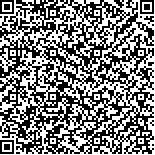| 本文已被:浏览次 下载次 |

码上扫一扫! |
|
|
|
| Wheeler conversion method based on layer-controlled horizon automatic tracking with ant-colony algorithm and its application |
|
YIN Wen1, GUO Jiashu2, LI Yuan3, ZHU Jianbing4, LI Changhong4
|
|
(1.Faculty of Petroleum in China University of Petroleum, Karamay 834000, China;2.College of Computer and Communication Engineering in China University of Petroleum, Qingdao 266580, China;3.Iinformation Center of Human Resource and Social Security Bureau of Dongying, Dongying 257091, China;4.Geophysical Research Institute of Shengli Oilfield Company Limited, SINOPEC, Dongying 257022, China)
|
| Abstract: |
| Continuity of the same phase axis is enhanced with pretreatment of seismic data. Then, the support vector machine technology is introduced to classify the points on the seismic profile. An improved ant-colony algorithm for seismic horizon correlation and automatic tracking algorithm is proposed, in which the information of seismic amplitude, instantaneous phase, dip angle, and pheromone concentration is used as the evaluation function of ant-colony horizon tracking. On this basis, contrast and tracking results of sedimentary cycle rhythm in time-depth domain are transformed to Wheeler domain which realizes synchronous interpretation of time domain and Wheeler domain. Thus, the spatial relationship of sedimentary assemblages is revealed effectively with highlight loss and overlay mode to make it possible to extract time slices in the age-strata domain, which have a deeper understanding with the time of deposition, erosion and deposition. The validity of the method is verified by the application of the actual seismic data. |
| Key words: seismic prospecting horizon automatic tracking ant colony algorithm Wheeler conversion synchronous interpretation in system domain |
|
|